
06 Nov Fast and easy tool for analysis of the fuel level, consumption, refillings and thefts
One of the most important elements of management and control of car fleets is monitoring the fuel flow, since this is one of the major expenses for running the venture. The fleet owners need a precise tool for measuring fuel consumption and an effective way to prevent fuel thefts. In their assistance come the systems for GPS monitoring and Fleet Management.
The system GPS Logistic provides several methods for dealing with this matter. Depending on the type and the model of a vehicle, we can differentiate between the following technical solutions:
Control of the fuel flow for vehicles with board computer (heavy trucks – manufactured after 2003, cars and buses manufactured after 2006);
Control of the fuel flow for vehicles without board computer – through connection of the GPS device to the original fuel level sensor, placed in the fuel tank (regardless of the type of the vehicle or the machine);
Control of the fuel flow of heavy trucks and machines with damaged or not precise original fuel level sensor – through installation of electronic fuel level sensor in the fuel tank of the vehicle or the machine;
А. Control of the fuel flow for vehicles with board computer (heavy trucks – manufactured after 2003, cars and buses manufactured after 2006). The GPS devices of Advanced GPS Technology have the option for connecting to the board computer of a vehicle via the CAN bus. This provides the following data for the fuel flow:
Quantity of the fuel, which has wеnt through the fuel injectors of the engine – for heavy trucks;
Level of the fuel in the fuel tank – for heavy trucks, cars and buses;
А.1. For heavy trucks with board computer the GPS device reads two key parameters – fuel consumption, according to the fuel injection system, and level of the fuel in the tank.
On the basis of the data for fuel consumption, GPS Logistic generates a report for a specific day, route, part of the road, time frame – for which it estimates the quantity of the consumed fuel between each separate work session of the engine. The system then divides the total quantity of the consumed fuel by the traveled distance in order to define the consumption of fuel (in liters) per 100 km. GPS Logistic can also be set to calculate the average fuel consumption on the basis of the total engine hours of the machine or the vehicle. The dimension in this case will be consumed liters per 1 hour.
On the basis of the data for level of the fuel in the tank – declared by the board computer as a percentage of the total volume of the fuel tank – GPS Logistic estimates the quantity of the fuel refills, as well as, the quantity of the direct withdraws of fuel from the tank – in case such are present. There is a special signalization when the system suspects a fuel withdraw from the tank.
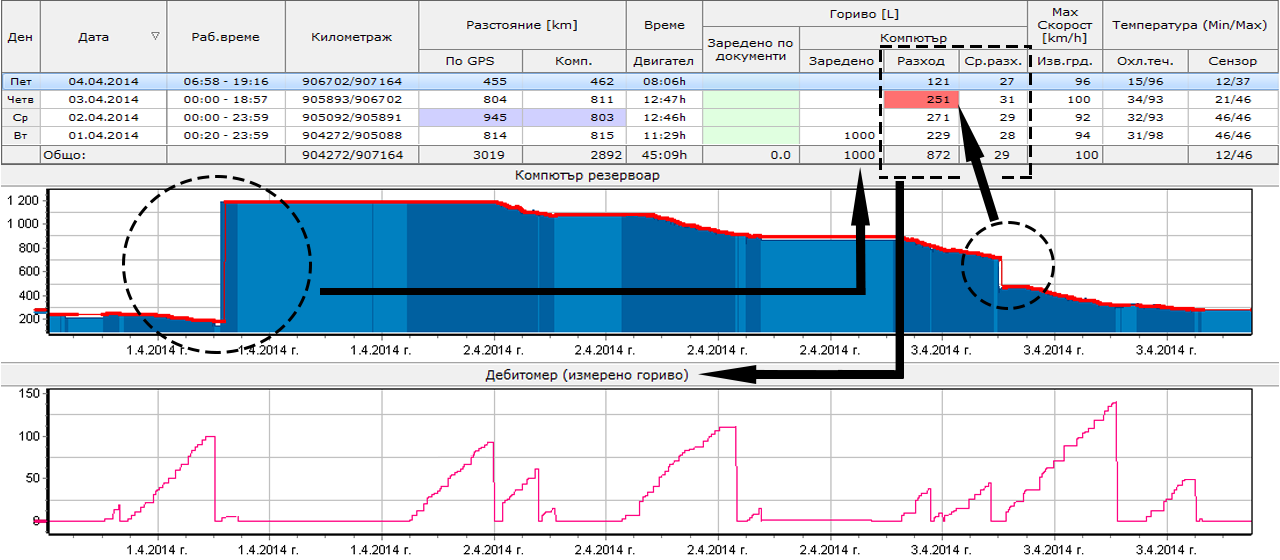
A.2. From the cars and buses with board computer, the GPS device reads data for the level of fuel level in the tank at each moment. On the basis of that information, in an indirect way, the system estimates parameters for total consumed fuel, fuel consumption per 100 km, refills and withdraws of fuel from the tank. On the fuel flow graphic the withdraw of fuel is pictured by a breaking of the line which averages the incoming data of the fuel level. The quantity of the missing fuel is calculated by subtracting the level of the fuel after the withdraw from the level of the fuel before the withdraw. By the opposite of this operation, the system finds the quantity of a refill.
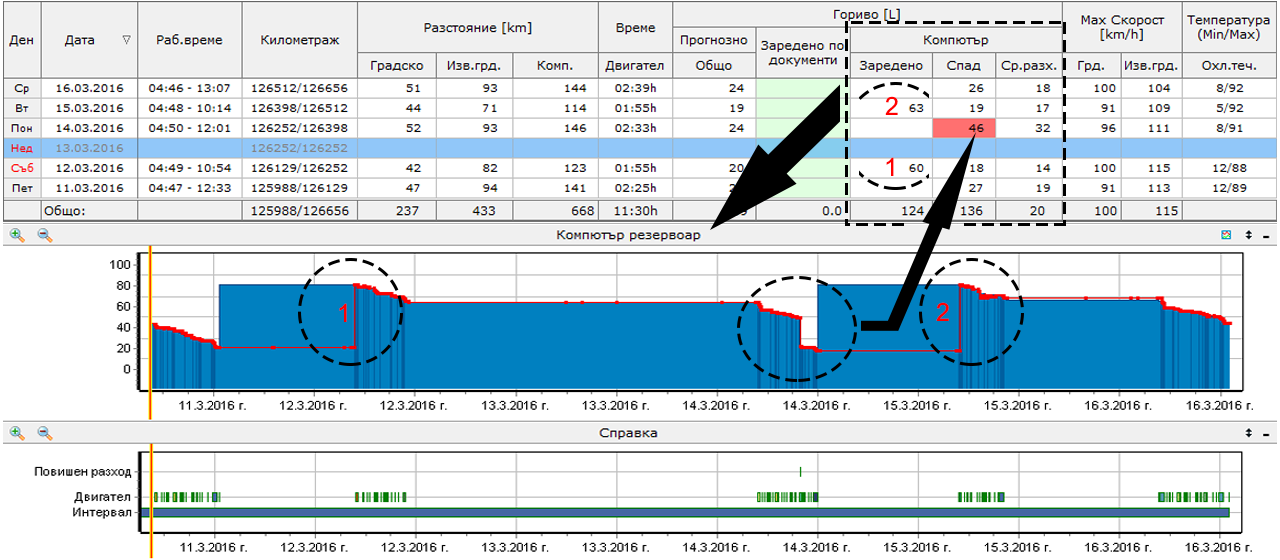
The combination between position of a vehicle at each moment and data, coming from the board computer, provide an opportunity for precise visual analysis of the traveled routes and visited places. We can prove with a high degree of accuracy the exact hour, place and time of a stop at which the system has registered a sudden drop of the fuel level from the tank.
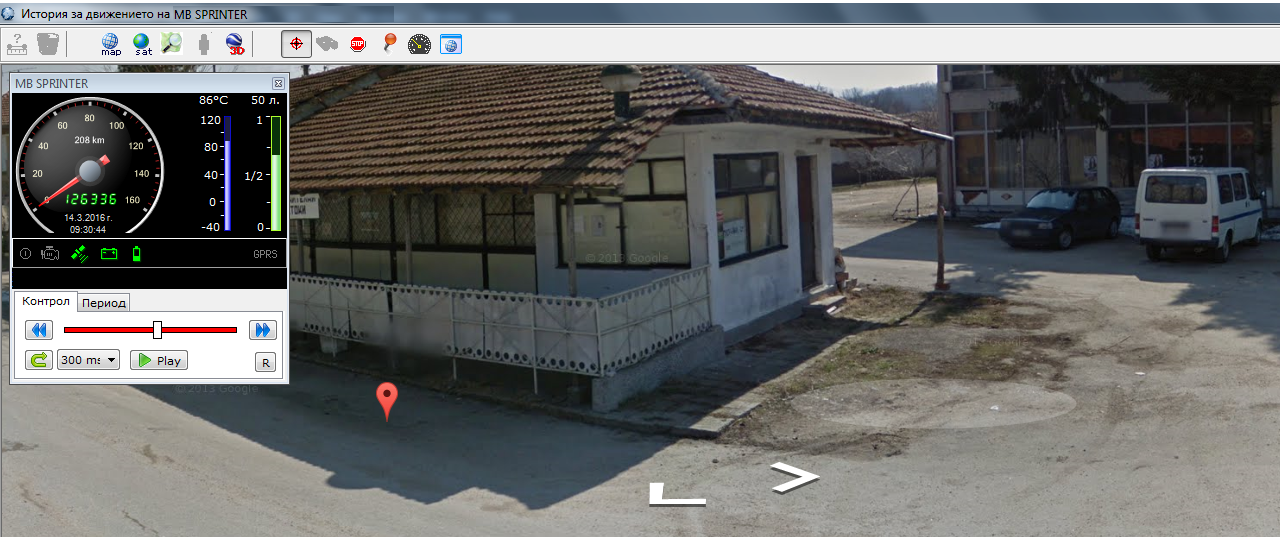
B. Control of the fuel of vehicles without board computer, achieved by connecting the GPS device to the original fuel level sensor, which is placed in the fuel tank of the vehicle. Each vehicle or machine with diesel or gasoline engine has an original fuel level sensor with floating magnet from the following type: fuel level sensor scheme. This type of fuel measuring has some drawbacks, but it can be a cost-efficient and appropriate tool for fuel flow analysis – in case the fuel sensor is not broken or one of a bad quality.
By connecting the GPS device to the original fuel level sensor, the GPS system starts to collect and record the data for the level of the fuel in the tank when the vehicle’s engine is working. Afterwards, GPS Logistic indirectly derives total consumed fuel, fuel consumption per 100 km., quantity of refills and withdraws of fuel from the tank.
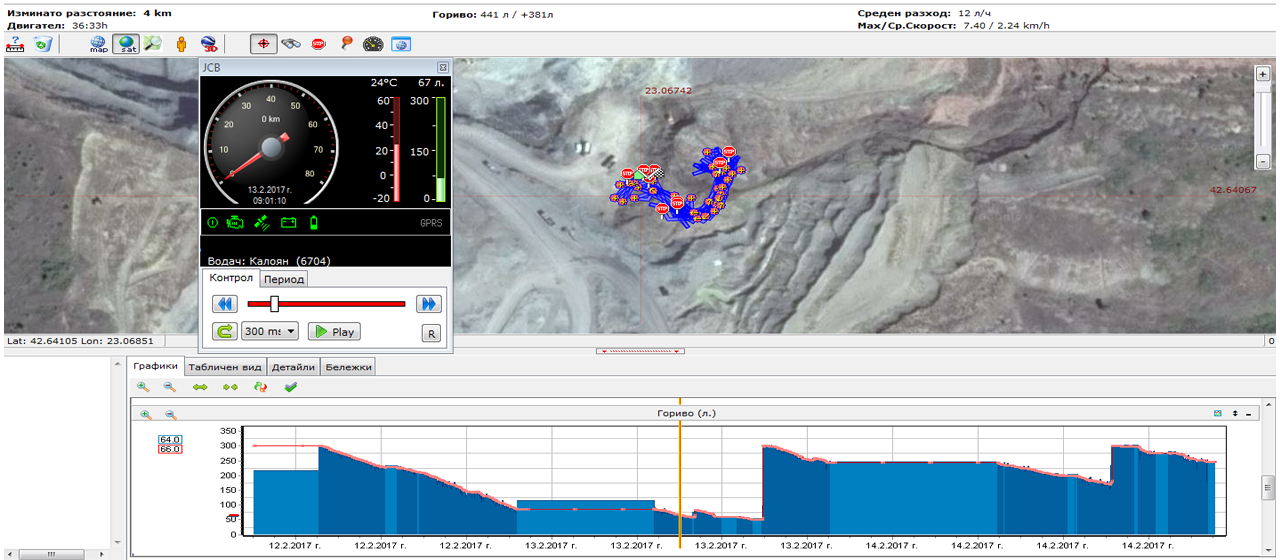
GPS Logistic provides the opportunity for direct import of data of the fuel refills through the files, which are generated by the systems of fuel station chains, when a vehicle is filled with fuel upon the driver presenting a customer card of his company. The import of files with refills in the GPS system is fast and easy. The data, read from the files, is stored and displayed in a special column and it is also an object of analysis by the software.
The GPS system automatically estimates the quantity of the filled fuel for a specific time period. We can easily differentiate each separate refill through the graphical interface of the program. By doing this, an additional check can be performed on the receipts, provided for each fuel refill, done by the driver while the vehicle is on the road.
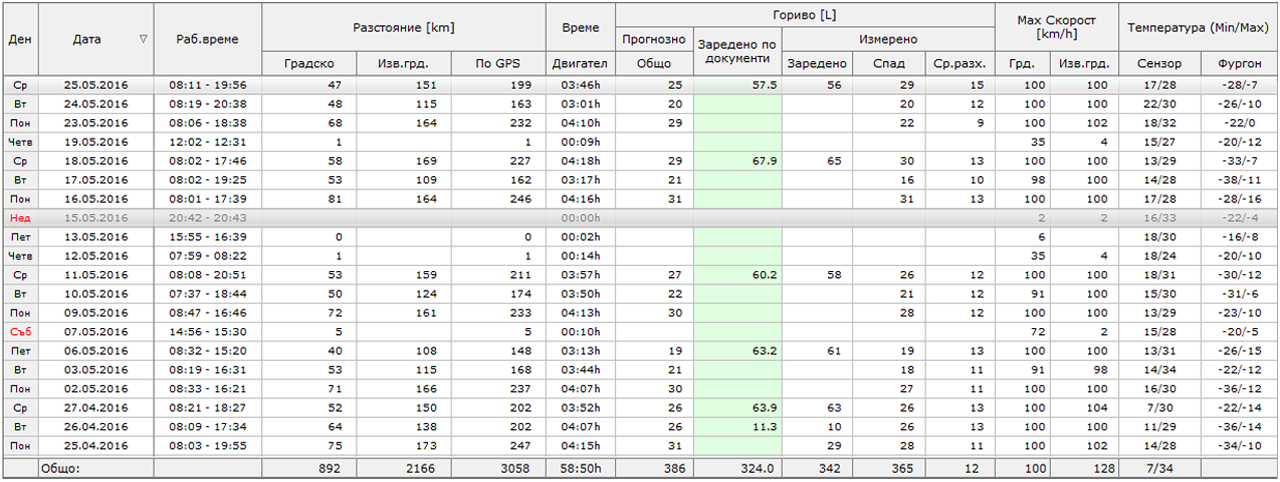
For increasing the accuracy of the fuel flow estimates (for properly-working original fuel level sensors) it is necessary the fleet owners to complete 2 steps: 1. provide to Advanced GPS Technology correct information about the total volume of the fuel tank in which the fuel level sensor is situated; 2. provide to Advanced GPS Technology correct information about an exact date, hour and quantity of few refills of the vehicle’s fuel tank, as one of the refills must be to top of the tank. A better option for step 2 would be to perform a controlled refill – a.k.a. fuel tank tarring – according to the telephone instructions of an operator of Advanced GPS Technology.
C. There is an alternative solution for more accurate analysis of the fuel flow – through the installation of an electronic fuel level sensor in one or more fuel tanks. By contrast to the original fuel level sensors, the electronic fuel level sensors do not have a floating magnet. They measure the fuel level by recording the exact height of liquid in the fuel tank, which GPS Logistic then translates in precise liters.
Despite the fact that the fuel level registered by the electronic fuel level sensor is more precise than the fuel level registered by the original fuel level sensor, the electronic fuel level sensor still needs a special fuel tank tarring (sketching of the tank). This process should be performed by following the instructions of an operator of Advanced GPS Technology, in order to ensure that the incoming data of the fuel level will be correct.
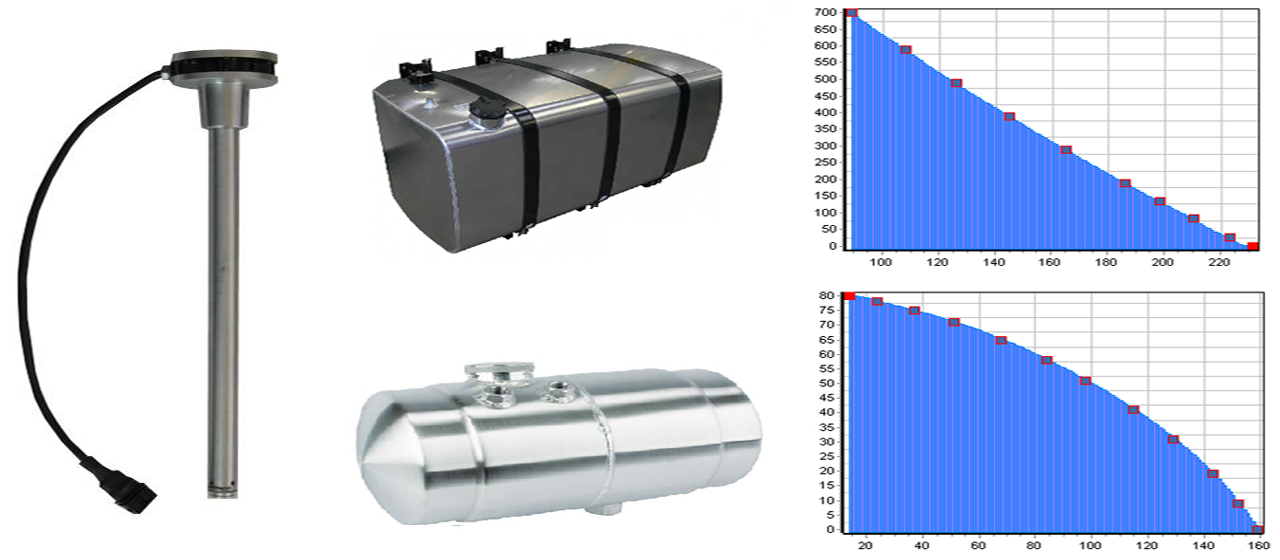
GPS Logistic has the option for tracking the fuel level of vehicles that have two or more fuel tanks – through the installation of electronic fuel level sensors in each of the tanks. The software is set to record and provide a basis for analysis of the data, incoming from each electronic fuel level sensor separately, but it also estimates and presents the total quantity of fuel in the system of tanks. The same is valid for the parameters for total consumed fuel, fuel consumption per 100 km., refills and withdraws of fuel from the tanks and the whole tank system.
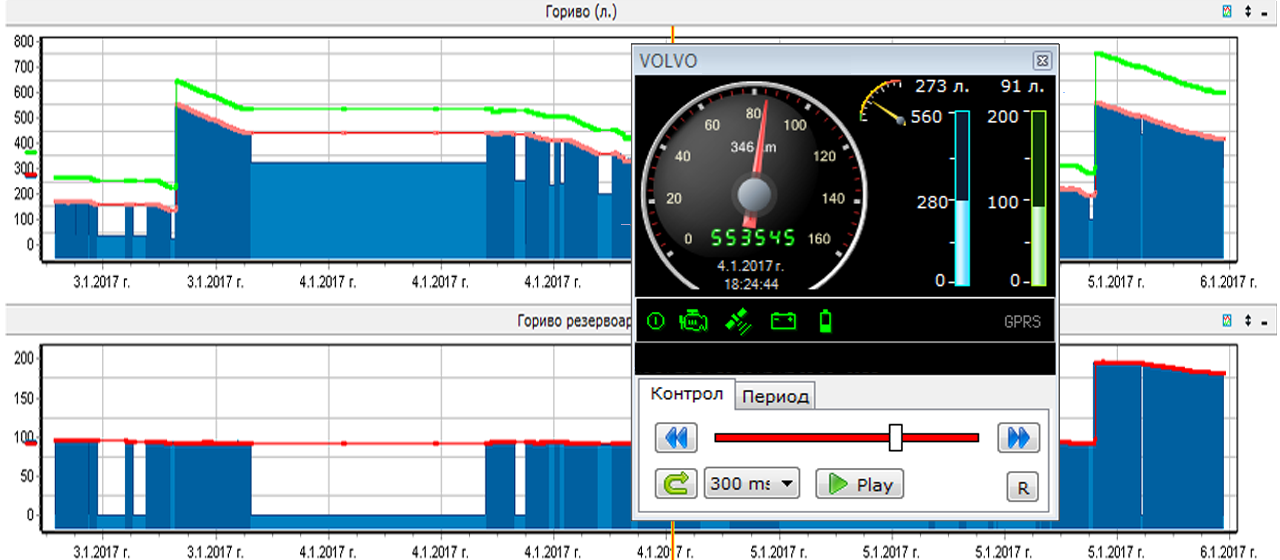
Appropriate alternative solution for the vehicles that do not have the option for monitoring of the fuel flow, is the implementation of summer and winter fuel consumption norm, fuel consumption norm for urban and rural driving, as well as, fuel consumption norm for static work of the vehicle. On the basis of this information, GPS Logistic automatically estimates a forecast for the total consumed fuel, taking into consideration the route traveled by the vehicle.
There is also an option for global overview of fuel consumption parameters of the fleet as a whole. From this report, the fleet owner can enter into more details regarding a specific machine or vehicle.


